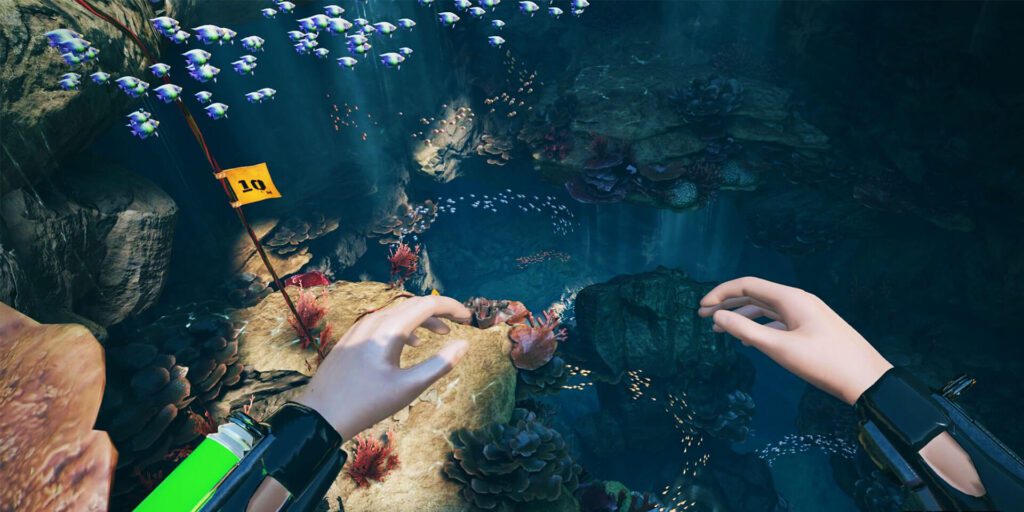This guide outlines the game development process using Unreal Engine 4. The first stage is concept development, where you define the idea, setting, characters, and plotline of the game. In the design stage, you create a visual representation of the concept, including characters, environments, audio, and gameplay mechanics. The programming stage involves writing the code that brings the design to life, using tools like Blueprints to make it accessible for non-programmers. The testing stage is important to catch bugs and issues before release, and refinement involves fixing bugs and gathering feedback to improve the overall experience of the game.
Creating Immersive Experiences: A Guide to Game Development with Unreal Engine 4
Game development is a complex process that requires a lot of attention to detail and creativity. Developing a game involves multiple stages, including concept development, design, programming, testing, and refining. Yet, despite this complexity, advancements in game engines make it more accessible than ever before. One such game engine that has gained popularity is Unreal Engine 4. This guide will take you through the steps of game development using Unreal Engine 4, from start to finish, to create an immersive experience.
Stage 1: Concept Development
The first stage of game development is to create a concept. This involves defining the idea, setting, characters, and plotline of the game. You should consider the target audience, gameplay mechanics, and design elements. Your concept should be unique and engaging, and you should be able to effectively convey the idea to your team.
Once you have formulated your concept, you should create a document that lays out your ideas in detail. This design document will serve as a blueprint for the entire development process. It should include information on graphics, audio, user interface, and all other aspects of the game.
Stage 2: Design
In the design stage, you should focus on creating a visual representation of your concept. This stage includes creating the characters, environments, audio, and gameplay mechanics.
Unreal Engine 4 provides a range of tools for designing your game. These include tools for creating environments, characters, and props. In addition, the engine allows for the creation of audio and music, as well as lighting and visual effects. You can use these tools to create a functional prototype of your game.
In the design stage, you should also consider the overall aesthetic of the game. It is essential to create a consistent and immersive tone and style that reflects the setting and story of the game.
Stage 3: Programming
The programming stage is where you bring your design to life. This stage involves writing the code that will control the characters, environments, and gameplay mechanics.
Unreal Engine 4 uses C++ and Blueprints to create code. Blueprints is a graphical programming language that allows you to create visual scripts without writing code. This feature makes it accessible for non-programmers to create complex functionality.
During this stage, it is essential to test the code continuously to ensure that it is working correctly. You should consider game mechanics such as physics, animations, and character movement, to name a few.
Stage 4: Testing
Once the programming stage is complete, you should thoroughly test your game to ensure it is up to standard. Testing is an important stage because it can catch bugs and other issues before the game is released.
Unreal Engine 4 provides a range of testing features to make this process easy. You can test the game in real-time, create automated tests, and even simulate user inputs to ensure the game responds correctly.
Stage 5: Refining
The refining stage is where you polish your game to make it ready for release. This stage involves fixing any bugs, adjusting the gameplay mechanics, and improving the overall performance of the game.
During this stage, it is essential to gather feedback from beta testers and refine the game accordingly. This feedback can help you identify areas that need improvement and help you make changes that elevate the overall experience of the game.
Conclusion
Game development is a complex process that requires a lot of creativity and technical expertise. Unreal Engine 4 provides a range of features that make it easy to create immersive experiences. From concept development to refining, it is a straightforward process that can result in the creation of unique and engaging games.
Hopefully, this guide has provided you with a step-by-step overview of the game development process using Unreal Engine 4. Good luck with your game development endeavors!
